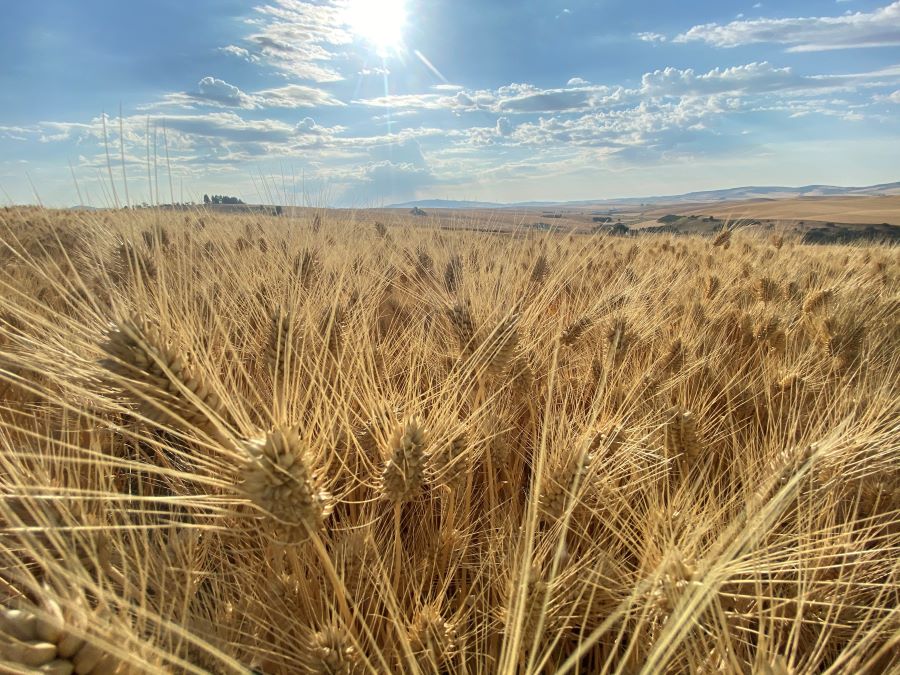Authors: Ali Schultheis, Kevin Murphy, and Kimberly Garland-Campbell
The Soil to Society grant is funded through the U.S. Department of Agriculture’s National Institute of Food and Agriculture’s Sustainable Agricultural Systems (SAS) program. The SAS Soil to Society project involves over 20 researchers from Washington State University and Johns Hopkins University, and evaluators from Kansas State University to improve the soil quality where these crops are grown, develop more nutritional varieties and products that can be brought to market, and evaluate the impact of these foods on human health.
By bringing together soil scientists, plant breeders, food scientists, and health researchers, the Soil to Society grant will cross disciplines to develop holistic agricultural management strategies and healthy, affordable food products to meet the needs of diverse individuals and communities.
Plant Breeding Team Goals:

What makes food better? Through the Soil to Society grant, we believe that breeding for increased health and nutritive value while improving agronomic and end-use qualities creates better food and a foundation for an accessible food system. Currently, WSU and USDA plant breeders are developing new varieties of barley, wheat, peas, lentils, quinoa and buckwheat with enhanced health and nutritive value through the Soil to Society grant. Each plant breeder is working on one or two of the above crops, with nutrition goals specific to the crop.
-Dr. Kimberly Garland-Campbell, a plant breeder with USDA-ARS and the Plant Breeding team lead is breeding wheat for higher iron, zinc, and manganese levels as well as lowered phytic acid.
-Dr. Kevin Murphy, Soil to Society project director, breeds quinoa and buckwheat for protein, amino acid quality, micronutrient population, and agronomic qualities through the Sustainable Seed Systems Lab.
-Dr. Bob Brueggeman with WSU’s Barley Breeding and Malt Quality Lab is focusing on producing crosses with high B-glucan and micronutrient content.
-Dr. Rebecca McGee with USDA-ARS focuses on pea and lentil breeding for high protein concentration and micronutrients.
-Dr. Stephen Jones from the WSU Breadlab is breeding buckwheat and wheat for agronomics and suitability for farmers, as well as desirable baking qualities.
In this context, nutritional traits for all crops include increased concentrations of micronutrients, protein, phenolic compounds, and lowered phytic acid. Crop specific traits include:
- Barley: B-glucan concentration.
- Wheat: High amylose, arabinoxylans, and fatty acid concentrations.
- Peas and Lentils: Amino acid profile, folates, and resistant starch.
- Buckwheat: Lysine and resistant starches.
- Quinoa: Essential amino acid profile.
Extensive preliminary evaluations have identified varieties of each crop with increased levels of these traits to provide nutritious varieties of each crop for immediate use by the food science, food engineering, and human health and nutrition teams.

To determine whether a relationship between genetic makeup directly leads to higher nutritional values, and if so, which genes affect which nutritional values, project researchers are creating genetic maps using genome-wide association studies. The results will identify marker trait associations that can be utilized for further selecting and breeding efforts. For example, we have identified the location of new genes for increased protein content derived from a wild wheat relative in one of our populations.
Current Research Status:
All of the plant breeders have developed populations that include the traits of interest and are currently growing the populations in the greenhouse and field in order to obtain good samples for nutrition studies. This year, the USDA wheat breeding program will evaluate the micronutrient content of a hard white wheat population and a club wheat population that are being grown at Pullman and Lind, WA. The barley breeding program is evaluating crosses with naked barley and the world barley core collection. The pea and lentil program is examining protein and mineral concentrations in high protein, low protein, and wrinkle seeded pea lines and in a large lentil population. The WSU Breadlab has conducted 100% whole-wheat sourdough test bakes on 72 spring breeding lines and planted the best into the field at Mt. Vernon this spring. They also have winter wheat lines for whole wheat products currently growing in the field.
The crop choice and breeding goals identified in our Soil to Society project objectives were informed by growers, millers, bakers, and multiple marketing and trade groups from small-scale to international in scope. These goals were developed through formal and informal meetings at field days, extension meetings, grain commission meetings, and multiple grower conferences. Stakeholders were critical in determining the diverse crops chosen for this research, and project personnel are working closely with stakeholders throughout the project’s execution to ensure that we are producing crop varieties and products that meet market and consumer needs, while staying highly accessible to the average eater.
This article is part of a series on the Soil to Society project. This series will explore the work of each project team, highlighting the different areas of collaboration across disciplines that work this project toward its common goal of creating a healthier food system and human population. Articles in this series will be released monthly- mark your calendars for Tuesday, August 22nd so you don’t miss the next one.
To learn more about the Soil to Society project and receive updates, go to their website, sign up for their quarterly newsletter, and follow @soiltosociety on Twitter, Instagram, and Facebook.
Comments
[…] scope of the Soil to Society grant and ongoing work by our Soils and Cropping Systems and Plant Breeding Teams. But what is the point of breeding better grain and legume varieties if farmers have nowhere to […]
[…] Systems team, breed varieties of wheat, barley, buckwheat, quinoa, lentils, and peas with the Plant Breeding team, and engineer products that utilize these nutrient rich crop varieties with the Food Science team. […]